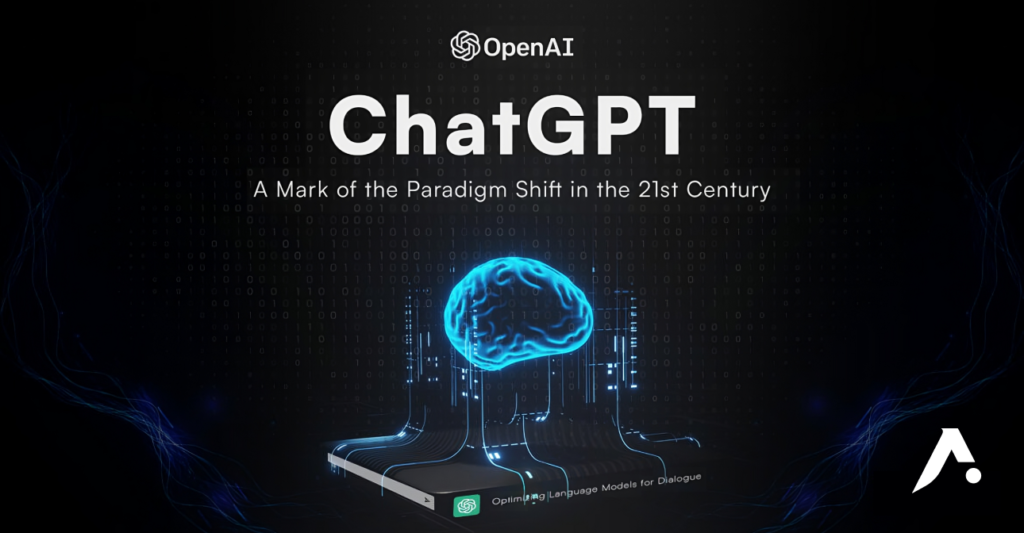Table of Contents
Introduction
OpenAI’s ChatGPT is a large language model with the capacity to produce writing that resembles that of a
human. It was trained on a massive dataset of internet text and is capable of a wide range of natural Language
Processing Tasks, Such as Language Translation, Text summarization, Text Generation, And Dialogue Systems.
This blog post aims to explore the capabilities of ChatGPT in Depth. We will examine how the model Works, The
training data it was built On, And Its Limitations. We will also look at various applications of ChatGPT, Including
examples of the model in action.
This blog post will provide a comprehensive overview of ChatGPT and its capabilities and a closer look at how it
can solve real-world problems.
What is a ChatGPT Prompt?
A ChatGPT prompt is the starting point of a conversation in the form of a question or instruction given to an AI
language model like ChatGPT.
ChatGPT is an AI-based software that uses machine-learning technology called Natural Language Processing.
To see it in Action, You need to sign up for ChatGPT by visiting the OpenAI website.

After that, you’ll see a simple chatroom. At the bottom, you can input your prompt in plain language.
For Instance, ‘How old is the Universe?’ and hit the send button.
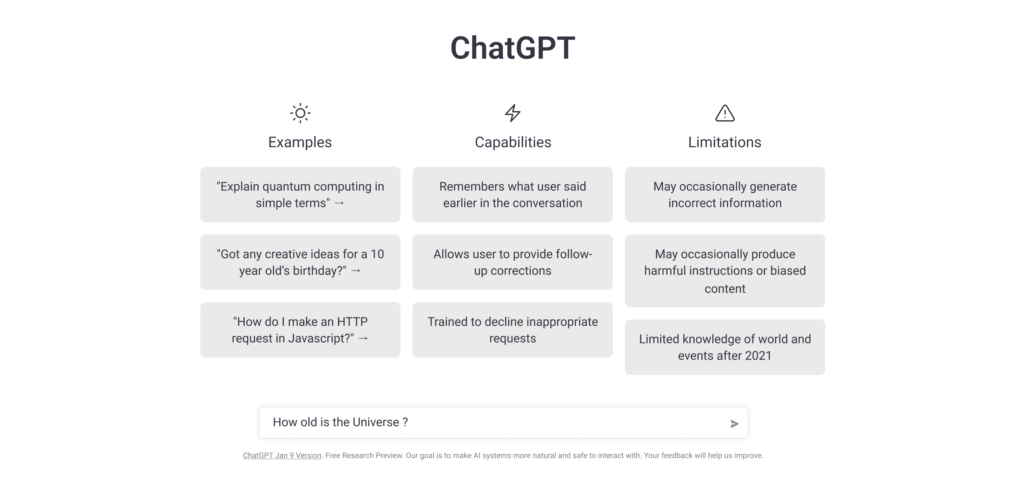
ChatGPT AI will then respond to your question in plain language.
The answer length and style may vary based on the prompt you entered.
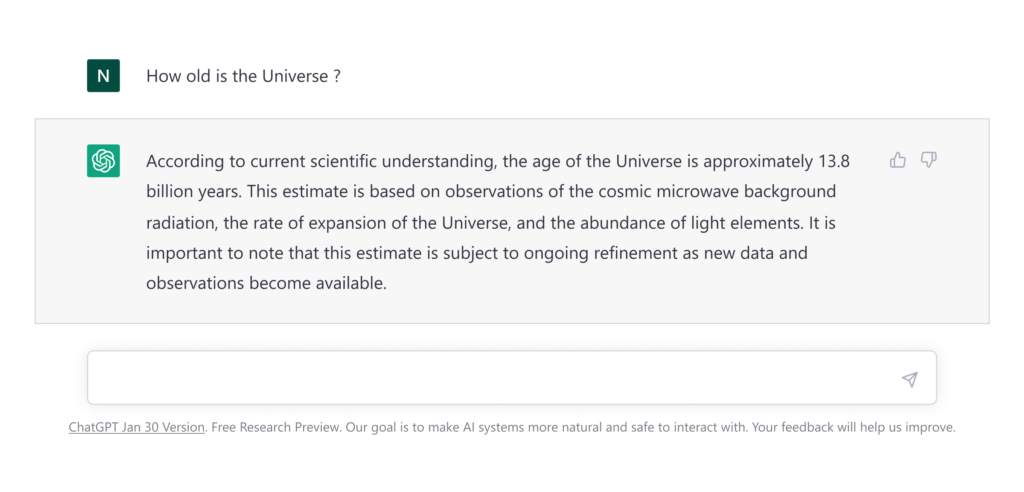
Writing better prompts allows AI to narrow down its approach and provide you with more specific details.
If you want to start a blog, then ChatGPT can help you find Article Ideas, The Article Outline, Rough drafts, SEO Optimization, Proofreading, Research, And More.
Many bloggers and marketers are exploring opportunities to generate content ideas using AI.
By learning some quick Prompt Ideas, You can speed up the process and unlock maximum benefits from ChatGPT AI to improve your workflow.
Note :
ChatGPT and other AI apps are usually not able to create content that can be simply copied and pasted without any human edits. When you use an AI tool, be sure to go through the results thoroughly to be sure that all information is correct and that the messages are appropriate for your audience.
Understanding ChatGPT
A transformer model is the kind of language model that ChatGPT is. It generates a response by reading a piece
of Text, Like a sentence or a prompt. Given the context of the words that came before It, The model is trained to
predict the next word in a sentence.
GPT-3.5, A language model trained to produce Text, Is the basis for ChatGPT’s fine-tuning. Reinforcement
Learning with Human Feedback (RLHF), A technique that uses human demonstrations to direct the model
toward desired Behavior, Was used to optimize ChatGPT for discussion. According to OpenAI.com
The WebText dataset, A sizable collection of internet Text, Served as the training data for ChatGPT. This dataset
contains a wide variety of text Formats, Including posts on Social Media, Forums, And Articles. ChatGPT can
produce language that is similar to how people write by training on such a broad dataset.
Applications of ChatGPT across industries
In this section, We will explore how ChatGPT can be applied to help businesses leverage the power of Artificial
Intelligence and Natural Language Processing.
1)Automated Customer Service
ChatGPT has the ability to automate repetitive tasks like delivering product details and FAQ responses. By
delegating some tasks to AI rather than Employees, Businesses might save time and money. Additionally,
ChatGPT understands complex problems better than other currently accessible AI Systems, Making it the best
choice for handling more complex customer concerns.
ChatGPT has the ability to automate repetitive tasks like delivering product details and FAQ responses. By
delegating some tasks to AI rather than Employees, Businesses might save time and Money. Additionally,
ChatGPT understands complex problems better than other currently accessible AI Systems, Making it the best
choice for handling more complex customer concerns.
24/7 Availability: As an automated customer Service, I can be available 24/7, Providing customers with quick
and efficient support whenever they need it.
2)Sentiment Analysis
Use ChatGPT to find out more about what customers think about a product or service. This information can be
used by businesses to improve their offerings and make sure they are meeting customer needs. Due to its
natural language processing (NLP) Capabilities, Which enable it to ascertain what clients think about a product,
ChatGPT is also a strong contender for this position.
Classifying Textual Data: Using supervised machine learning algorithms, I can be trained to classify textual data
into different sentiment categories such as Positive, Negative, or Neutral. This can help businesses to identify
and analyze the sentiment expressed in their customer feedback or social media posts.
3)Automated lead generation
ChatGPT can generate leads by talking with potential customers and learning about their needs. Based on the
interests and preferences of each customer, You can utilize this information to tailor your marketing campaigns.
Automated lead generation involves using technology and data to identify potential customers who may be
interested in a company’s products or services. As a language model, I can assist in automated lead generation
by processing large amounts of textual data and extracting relevant information about potential leads.
4)Automated sales support
Depending on customer preferences, ChatGPT can generate tailored recommendations. Businesses could close
more sales if they gave customers the right options. Because it comprehends complex questions much better
than other AI systems in use today, ChatGPT excels at such tasks.
Lead Generation: I can help identify potential leads by monitoring social media platforms, analyzing customer
data, and extracting relevant information such as contact details and job titles.
5)Chatbots and conversational AI
ChatGPT is a good candidate for chatbot and conversational AI applications due to its ability in natural language
understanding and generation. The model can be improved by training it on a dataset of conversational text,
Which will teach it how to comprehend and react to user input like a human would.
ChatGPT’s capabilities in natural language understanding and generation make it well-suited for chatbot and
conversational AI applications. By fine-tuning the model on a dataset of conversational text, It can learn to
understand and respond to user input in a human-like manner.
6)Solve the problem of unstructured data
Text Extraction: I can extract text from unstructured data sources such as PDFs, Emails, And Web pages using
optical character recognition (OCR) and other text recognition techniques.
Text Classification: Using NLP techniques, I can classify text documents into predefined categories based on
their Content, Making it easier to organize and search for information.
In the midst of the digital revolution, unstructured data is an inconvenience. They are challenging to manage,
Organize, And Sort, Which is the problem. Because it can transform unstructured data into structured Data,
ChatGPT is useful.
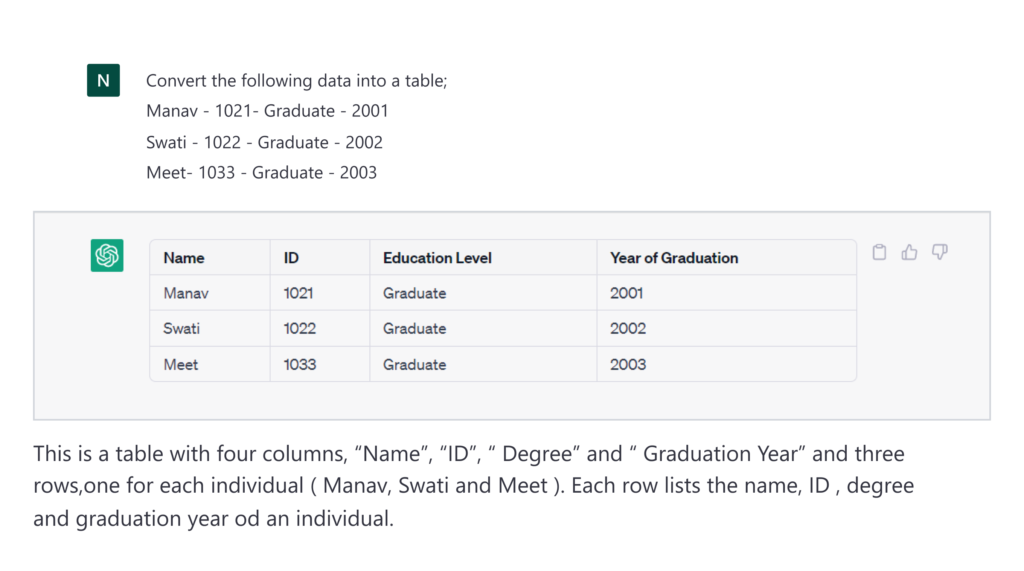
7)Using ChatGPT for language translation
Yes, ChatGPT can be used for language translation tasks. However, It is important to note that ChatGPT is
primarily a language generation model, And not specifically designed for translation tasks. Nonetheless, With
appropriate fine-tuning and Training, It can be adapted to perform translation tasks as well.
To use ChatGPT for language translation, You would typically need to fine-tune the model on a large corpus of
parallel texts in the source and target languages. This fine-tuning process involves training the model to map
input sentences in the source language to their corresponding translations in the target language.
One of the most promising applications of ChatGPT is language translation. The model is able to understand
and generate text in multiple languages, Making it a powerful tool for machine translation. By fine-tuning the
model on a large dataset of bilingual text, It can learn to translate text from one language to another with a
high degree of accuracy. This can be applied to a Range of Tasks, Including document translation, Chatbot
Translation, And Website translation.
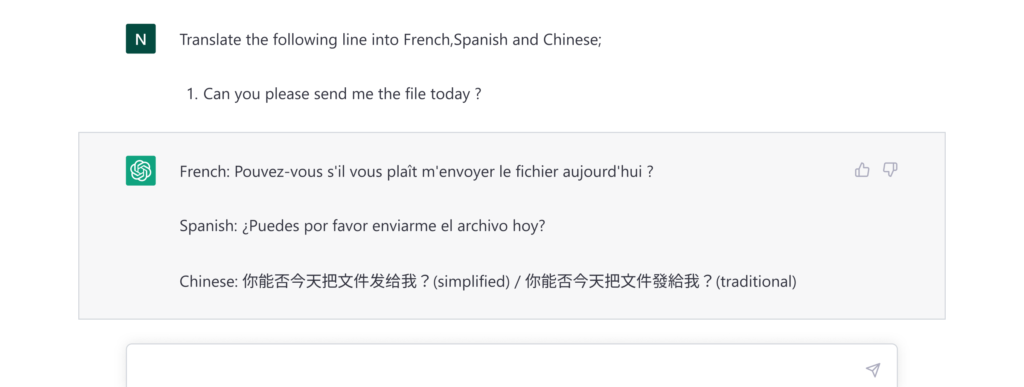
8)Summarization and text analysis
For text summarization, ChatGPT can be fine-tuned on a large corpus of documents, With the objective of
generating a concise summary of the main points of the document. This can be useful in applications such as
news article summarization, Where the goal is to provide a brief overview of the article’s content.
ChatGPT can be used for text summarization, Which distills the most important information from a large text.
This can be useful for a variety of applications, Such as news summarization, Product reviews summarization
and research paper summarization. Additionally, It can be used for Text Analysis, Such as Sentiment Analysis,
Topic Modeling, And Named entity recognition.
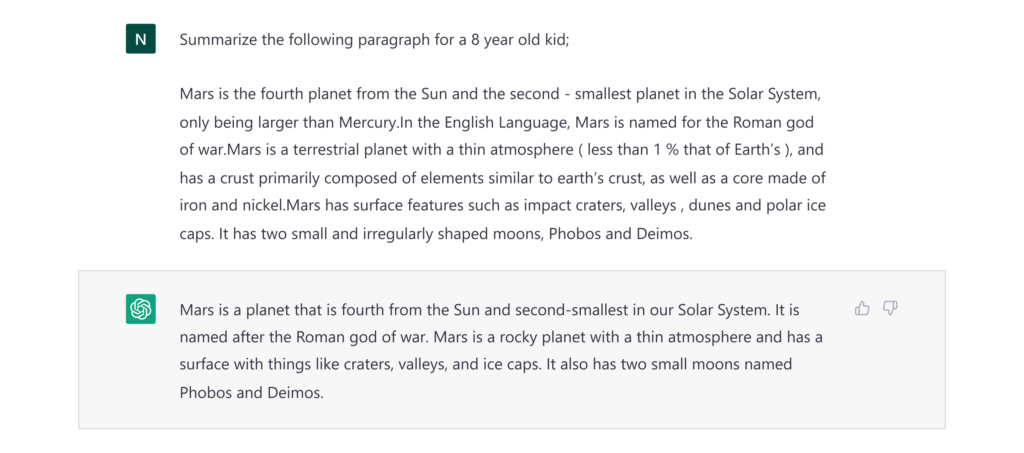
9)Debugging Code using ChatGPT
Language modeling: ChatGPT is trained on a large corpus of text data, which means it has a strong
understanding of natural language. This understanding could be useful when working with error messages or
code comments, as ChatGPT may be able to suggest possible causes or solutions based on its knowledge of the
language.
Contextual understanding: ChatGPT is designed to understand the context and meaning of text, which could be
helpful when working with complex code or debugging scenarios. For example, if you’re trying to figure out why
a particular piece of code isn’t working, you could input the relevant code snippets and error messages to
ChatGPT, and it may be able to suggest possible causes or solutions based on its understanding of the context.
ChatGPT can assist with identifying and troubleshooting errors in code by providing explanations, suggestions,
and examples.
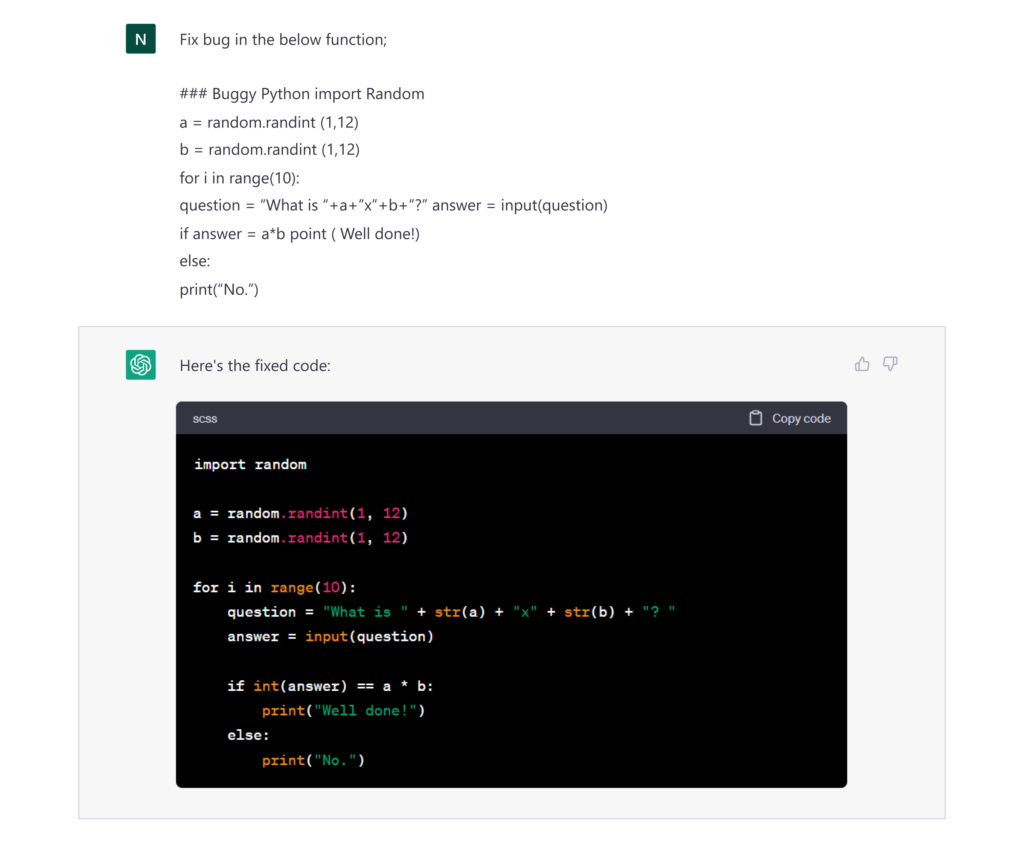
10)SQL Queries
ChatGPT is not specifically designed for generating SQL queries, but it can be used to assist with the process in
some cases. Here are a few ways in which ChatGPT could potentially be helpful for generating SQL queries.
Contextual understanding: ChatGPT is designed to understand the context and meaning of text, which could be
helpful when generating SQL queries. For example, if a user inputs a query that’s missing some details or
context, ChatGPT may be able to ask clarifying questions or suggest additional information that’s needed to
complete the query.
From the text, ChatGPT may create SQL queries. Yet more tool to simplify your life. Every data scientist’s toolkit
should include SQL. Of course, mastery is necessary, but having a strong grasp of SQL can help you in all
aspects of your professional life.
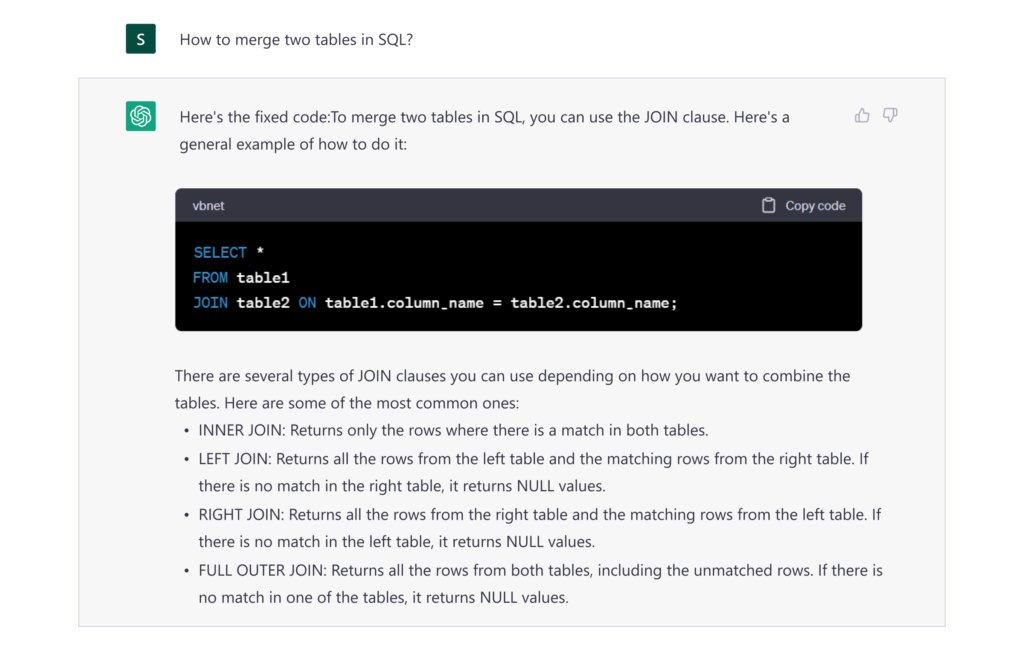
11)ChatGPT For Personalized Content Generation
Yes, ChatGPT can be used for generating personalized content, such as product recommendations,
personalized emails, or tailored marketing messages. Here are some ways in which ChatGPT could be used for
personalized content generation:
Tailored marketing messages: ChatGPT can be trained to generate marketing messages that are tailored to
specific user segments or personas. For example, a marketing campaign targeting young adults could use
ChatGPT to generate content that’s more likely to resonate with that audience.
Additionally, ChatGPT can be used to target particular individuals with the material. By training the model on a
dataset of user data, businesses can use it to create tailored content like emails, social media postings, and
product suggestions.

The following is an accurate overview by Mckinsey about the current applications of AI tools like ChatGPT in
various fields;
- Marketing and sales: Crafting personalized marketing, social media, and technical sales content (including text, images, and video); creating assistants aligned to specific businesses, such as retail
- Operations: Generating task lists for efficient execution of a given activity
- IT/engineering: Writing, documenting, and reviewing code
- Risk and legal: Answering complex questions, pulling from vast amounts of legal documentation, and drafting and reviewing annual reports
- R&D: Accelerating drug discovery through better understanding of diseases and discovery of chemical structures.
These are just a few of the numerous uses for ChatGPT. We anticipate seeing additional use of technology to
enhance businesses and speed up processes as it develops and improves. If you’re looking for a strong solution
to assist with content Creation, Customer service enhancement, or Data Analysis, ChatGPT is unquestionably
worthwhile to try.

